You may already be familiar with ocean freight, it’s the standard ocean shipping method that’s most frequently used. In this method, your goods get packed into shipping containers (massive steel storage boxes seen across every shipping yard), before loading the containers onto sea vessels that carry them across the ocean.
Containers are available in multiple sizes that help determine the type of shipment you’ll need: 20 foot, 40 foot standard, or 40 foot “high cube” containers are our primarily used sizes. If your volume is large enough to fill a container, you would ship using an FCL (or Full Container Load). If your goods are only a few CBMs (Cubic Meters), you would ship using an LCL (or Less than Container Load) shipment.
LCL shipments tend to be more expensive on a per CBM basis, and often take 10 to 14 days longer than FCL shipments. Since, in LCL, you would share a container with other importers, the goods would need to be consolidated at the original port then deconsolidated at the destination port. The packing and organization process requires a separate third party, called a groupage company, to complete.
Your forwarder or sourcing company normally manages most of the paperwork required to clear your goods through customs. They’ll also pay the haulage fees necessary to deliver the items to your door or warehouse.
For most importers, shipping by sea is preferred. Since Sea Freight is the least expensive shipping method, it’s the best way to generate strong ROI. But, it’s important to note that the process requires patience. Depending on the origin and destination ports, you should expect 30 – 45 days between departure and arrival times.



